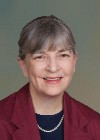
Howe Two Software has been designed by award-winning software designer Leslie Howe using interactive Visual Basic®. |
BS Westminster College, (Who’s Who, Kappa Mu Epsilon, Sigma Pi Sigma) MA Cleveland State University |
Midpark High School, Manchester High School, Farragut High School, |
Presenter University of Tennessee |
Teacher of the Year, 2014, Knoxville, Tennessee Teacher of the Year, 2014, Knoxville, Tennessee Above and Beyond Award, 2005, Knoxville, Tennessee Teacher of Excellence Award, 1999, Knoxville, Tennessee Winner of State of Tennessee Software Writing Contest, 1985 |
|
|
In the fall of 1995 Leslie Howe was assigned to serve as one of two lab coordinator for the newly created Math Lab at Farragut High School in Knoxville, Tennessee. The administration was eager to use technology to enhance instruction across the curriculum and the math department was the first to experiment with using computers to advance the core curriculum.
The lab consisted of thirty five- 75-MHz Pentium computers. Two major commercial software packages were purchased for use in the lab. One was a Geometry package the other an integrated symbolic solving and graphing package. These were quality purchases. The advanced package was perfect for Pre-Calculus and Calculus classes and the Geometry package enabled exploratory investigations but soon it became clear that there was a need for other activities.
It was desirable for all students to use the lab. There seemed to be too great a gap between the level of the students (especially those in introductory courses) and the more sophisticated demands of the software. Activities were needed that targeted specific skills. One teacher requested “electronic flash cards”. Rather than looking in catalogues for a program Leslie went home and wrote “Signed.exe” a drill program with signed numbers. Once that was written “Multiply.exe” was created as a modification of the first program. A timing feature was included in the program so that students could compete to see who answered twenty problems in the shortest amount of time. Students responded positively to these simple programs and were often asking when they were going to go back to the lab again.
When the lab opened for the 1996-1997 school year Leslie decided that she needed to conquer the mouse. She took course in C, C++ and the interactive Microsoft® programming language Visual Basic®. First she re-designed her simple programs to be more interactive. Then, she then began to systematically attack the curriculum trying to provide an application for the major concepts. For each unit she would ask herself “what do they usually have trouble mastering or understanding in this section.” She would then try to create an application that would provide a visual structure to a concept, practice with a needed skill or a forum for discovery. Each application took about 20-25 hours to create.
Lab use increased. Students and teachers gave useful feedback that was used to modify and improve each program. Programs made it possible to monitor each student during guided practice. Those who needed extra “coaching” could be readily identified. Students received instant feedback to their attempts at implementing new concepts. Students were provided with a mental, visible model for mastering skills. As a bonus students enjoyed coming to the lab. In the first semester of 1996-97 the computer math lab working on a 4-block day had 262 class encounters. (This means a teacher would bring their class to the lab for some activity.) Second semester the number was up to 364 class visits. Students came to the lab saying “This place is awesome” and left saying “Thank you, I get it now.”
Teachers began to integrate programs more appropriately into their lesson plans. Technology was being used to advance the core curriculum. Coworkers began to suggest to Leslie that she try and sell the programs to other schools and educators. When a visitor to Farragut High School asked to buy the programs, she finally acted on the suggestion. She bought the equipment needed to produce the programs in a distributable form hoping that these programs would provide other schools with Farragut 's success. Howe-Two Software was born.
Leslie Howe continues to teach and create new software. Her daughter Elisabeth, the two of Howe-Two, maintains and develops the Howe-Two Web Site.
Howe-Two Software is unique in that it has been produced from start to finish by an experienced math teacher with a programming and artistic background. The modest price is also unique and should not mislead the buyer. These programs present a pleasing-mouse driven interface that students like to use. Pass the good news on to others. Quality Programs at an Affordable price is the goal of Howe-Two Software.